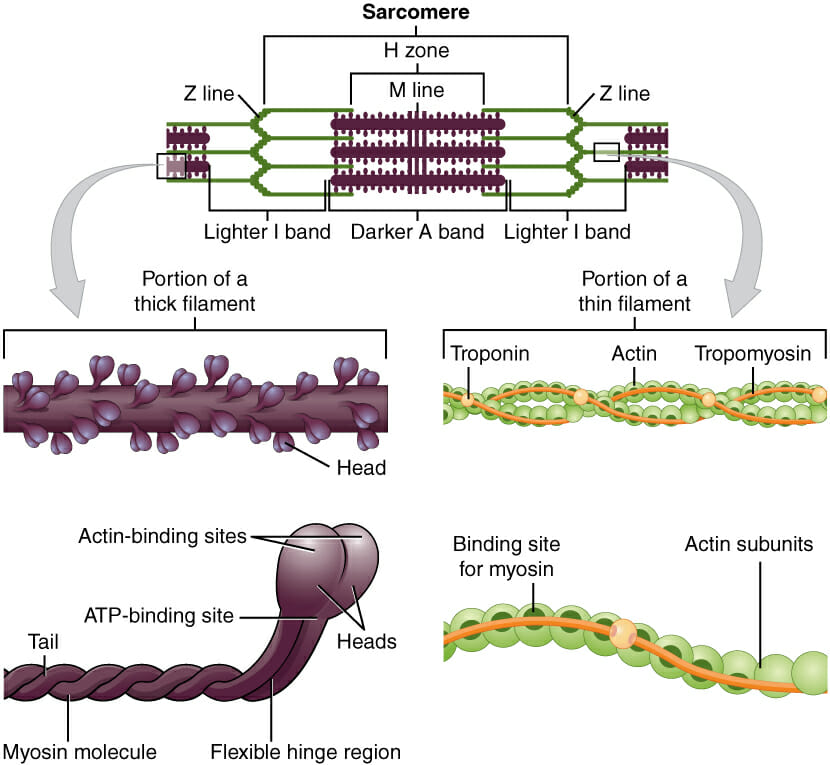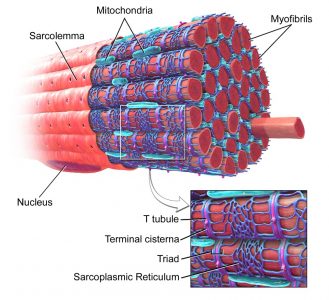How Are Muscle Cells Adapted to Their Function
Skeletal muscle cells form elongated fibers within the body. In skeletal muscle the cells merge so that the muscle fibres contract in unison.
A cell consists of three parts.

. They have several nuclei within each cellphone. What tissue is its major. Many muscle cells grouped together.
For example muscle cells bring parts of the body closer together. Blood production - red blood cells to carry oxygen and white blood cells to protect against infection are produced in the bone marrow of some bones. Cardiac muscle fibers have a single nucleus are branched and joined to one another by intercalated discs that contain gap junctions for depolarization between cells and desmosomes to hold the fibers together when the heart contracts.
Keeping this in view how are bacterial cells adapted to their function. These cells are able to contract get shorter and relax return to original length. They contain protein fibres that can contract when energy is available making the cells shorter.
Adaptations of Muscle Cells Muscle cells have many mitochondria to provide energy for movement. Muscle cells are specially adapted to allow for movement. Muscle cells are adapted to their function in a few ways.
Within the cytoplasm lie intricate arrangements of fine fibers and hundreds or even thousands of miniscule but distinct structures called organelles. Muscle How different types of plant cells are adapted to their function There are. The nerve impulse travels down the nerve cells to the neuromuscular junction where a nerve cell meets a muscle cell.
The plasticity of muscle has long been recognised but apart from some biologically trivial generalisations resistance exercise causing an increase in muscle bulk and repeated moderate dynamic exercise causing an increase in muscle oxidative capacity we have made slow progress in understanding the mechanisms involved. They contain protein fibres that can contract when energy is available making the cells shorter. Muscle cells are adapted to their function by being able to work both aerobically and anerobically for a time by being able to exert force both in.
Keeping this in consideration how are cardiac muscle cells adapted to their function. The cell membrane the nucleus and between the two the cytoplasm. Perfusion of the coronary arteries occurs during diastole.
For example muscle cells bring parts of the body closer together. Function of a Muscle Cell To activate a muscle the brain sends an impulse down a nerve. Cardiac muscles are designed to contract together.
There are different types of muscle. Muscle cells have muscle fibres which can relax and contract to change the shape of the cell. About Muscle Cells All muscles in the body are made of muscle cells.
This contrasts with most different cells within human bodies. Muscle cells Muscles cells are found in bundles which make up our muscles. The entry of blood into the coronary arteries occurs through the aortic sinuses which are openings found behind the flaps of the aortic valveAs the heart relaxes during diastole blood fills the valve pockets allowing blood flow into the coronary arteries to supply the cardiac muscle.
These cells can branch out forming bodily connections with many surrounding cells. They have structures that are adapted for their function. All cells need energy to function but muscle cells have unusually high energy requirements.
Skeletal-muscle cells have ordered striations so that they can contract farther than other muscle cells to move the body. And visceral-muscle cells are designed to contract. When the muscles contract the bones move.
Specialised cells Many cells are specialised. A muscle cells capacity to contract or enhance itself enables motion. They have structures that are adapted for their function.
Likewise which cells need lots of energy for movement. A cell is adapted to its function because of differential expression of genes during fetal development during which they get differentiated and determined to provide division of labour to different tissues. The major thing that allows them to function correctly as muscle cells is the higher number of mitochondria.
The impulse is transferred to the nerve cell and travels down specialized canals in the sarcolemma to reach the transverse tubules.
Information Fluency Science Andrea S Blog

Muscle Cell Myocyte Definition Function Structure Biology

Red Blood Cells Red Blood Cells Structure Large Surface Area Ppt Video Online Download


Comments
Post a Comment